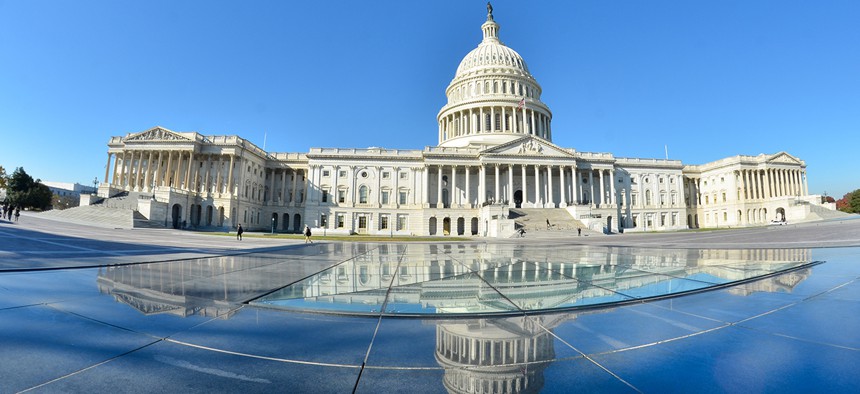IT Modernization Fund: Hope on the Hill?

Orhan Cam/Shutterstock.com
What real prospects does the $3.1 billion fund have for enactment?
Alan P. Balutis is senior director and distinguished fellow at the U.S. public sector at Cisco Systems, Inc.
Federal Chief Information Officer Tony Scott continues his association and trade event speaking tour trying to drum up support for the $3.1 billion IT Modernization Fund included in the president’s fiscal year 2017 budget. His message is always strongly delivered and upbeat. But what real prospects does it have for enactment? And if it isn’t part of the next appropriations bill, how can the government change from its current glide path of spending 75 to 80+ percent of the total IT budget on operations and maintenance? Let’s deal with each question in turn.
First, key legislators appear unsupportive. Rep. Will Hurd, R-Texas, “balked at the price tag”, according to a recent FCW article. And Rep. Jason Chaffetz, R-Utah, has said he is “warming to the idea” but “not there yet.” But more importantly, the $3.1 billion was not included in the budget committee’s FY 2017 allocation, nor has it found a place in one of the 12 appropriations bills moving through the House or the Senate.
With time running out for this current Congress, appropriations committee staffers give the proposal little prospect of passage. As one said to me last week: “I’d put its chances at either slim or none. And 'slim' just left town.”
Finally, staffers have hinted that they are looking at other mechanisms to address the existing imbalance without providing additional funding.
So, what options are left for incumbent CIOs to start turning the ship from the current 75+ percent on O&M to something less? Where can funds be found to invest in modernized infrastructure, applications and systems? Two sources come to mind.
Many departments/agencies already have Working Capital Funds, or WCF, revolving funds, franchise funds and so on. The names sometimes differ but the foundation is basically the same; they were created to provide central funding for an array of common shared services – personnel operations, payroll, administrative payments, building management and certain information technology services.
Such funds are supposed to operate in a business-like manner and to recapture the full cost of providing the noted services, to include depreciation, upkeep and replacement. CIOs should sit down with their chief financial officers and the WCF administrators and begin to plan to use these funds to replace, modernize and enhance, rather than to just maintain.
Second, I am somewhat sympathetic to the Hill argument that the government spends $80 billion to $100 billion each year on IT and hence doesn’t need additional investments to turn the ship; it just needs to be smarter about its current budgeting and spending.
Federal budgeting remains largely incremental; requests begin with the base -- what is being spent this year. Some argue that, in fact, agencies build new investments and modernization into that base because it receives less scrutiny from budget reviewers. Then, one adds “adjustments to base” – pay raises, inflationary increases, rent hikes, etc. Then, finally, one begins to justify requested increases for new initiatives.
But CIOs could use their enhanced Federal Information Technology Acquisition Reform Act authorities to revise departmental agency budget formulation guidance. They could direct bureaus or operating divisions to submit requests that move at least X percent (I’d propose 15 – just to make the conversations interesting) of the current O&M base to development, modernization and enhancement, or DM&E.
Request that they include an explanation of why they selected this program, system, etc., and a transition plan for how they would move from the “as is” to the “to be” state. This is simply a more modest, IT-focused version of the Jimmy Carter-era, zero-based budgeting process.
The goal across government should be to move at least $5 billion from O&M to DM&E in FY 2018, and then each year thereafter until we reached a more reasonable balance.
And for those who would argue it can’t be done, reach out to Roger Baker at his retirement waterfront estate in Florida and ask, “Is it true that when you and Alan Balutis worked together at Commerce, you...?" He should pick up.
NEXT STORY: If Elected, Clinton Wants to Keep USDS and 18F





